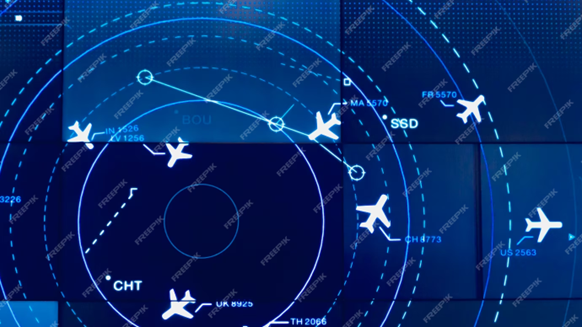Air Traffic control and Navigation Pre-Academic
Air traffic control is provided by ground-based air traffic controllers who direct aircraft on the ground and in controlled airspace; they also inform air crew about non-controlled airspace. At PHILLY-TECH, students will learn about operations and equipment used in the air traffic control and navigation systems. Students will learn how to prevent ground and air collisions, how to organize the flow of air traffic, and provide information and other support for pilots.

Diploma in Air Traffic control and Navigation
AIRTRAF 100: Introduction to Air Traffic Control (40 hours):
- Overview of air traffic control
- Responsibilities of air traffic controllers
- Safety and communication procedures
AIRTRF 101: Air Traffic Control Procedures (80 hours):
- Airspace classification and regulations
- Separation standards and traffic management
- Emergency procedures and incident handling
AIRTRF 102: Air Traffic Management (60 hours):
- Airport operations and control tower functions
- Approach and departure control
- En-route control and ARTCCs
AIRTRF 103: Air Traffic Communication (80 hours):
- Radio communication and phraseology
- Communication procedures with pilots
- IFR and VFR communication requirements
AIRRDR 100: Radar Operation (80 hours):
- Radar principles and operation
- Primary and secondary radar systems
- Radar displays and tracking procedures
AIRNAS 100: Navigation Aids and Systems (60 hours):
- Navigational aids (NDB, VOR, ILS, GPS)
- RNAV and RNP systems
- Ground-based and satellite navigation
AIRWTH 100: Weather and Air Traffic Control (40 hours):
- Weather theory and impact on air traffic
- Weather observation and reporting
- Weather-related decisions in air traffic control
AIRTSAF 100: Air Traffic Control Safety and Regulations (40 hours):
- FAA regulations and safety procedures
- Human factors in air traffic control
AIRSIM 100: Simulator Training (200 hours):
- Practical training using air traffic control simulators
- Realistic scenarios and practice with live and virtual traffic
AIROJT 100: On-the-Job Training (400 hours):
- Observation and assistance in an operational air traffic control facility
- Practical experience in managing live air traffic
AIRTR 104: Certification Preparation (40 hours):
- Review and preparation for the FAA certification exams for Air Traffic Control and Navigation.
Students have to contact the school administration if they want to take extra credits or transfer credits to pursue the Diploma Certificate or Associate of Applied Science (A.A.S.) Degree in their field of interest. Students will select required number courses in each of the areas listed to meet general education requirements graduation for the A.A.S. Some of these courses can be transferred directly from and to the university system and may be substituted for recommended courses on the outline. Students should speak with an advisor before doing so these selective courses are required for all students.
- Selected Communication Course (Choose two for Diploma or three for the Associate)
ENGL 100: Fundamentals of Speech
CPL 100: Career Planning
CPL 101: Communications and Career Strategies
ENGL 101: Composition
ENGL 102: composition
- Selected Mathematics Course (Choose two for Diploma or three for the Associate)
MATH 100:General Math
MATH 101:Intermediate Algebra
MATH 102:College Algebra
- Selected Social Science Course (Choose two for Diploma or four for the Associate)
ECON 105:Leadership
ECON 101:Principles of Microeconomics I
ECON 102:Principles of Macroeconomics II
SOC 101:Introduction to Sociology
PSYC 101: Introduction to Psychology
HIST 101: History
